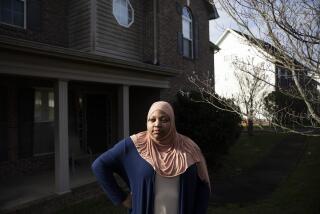Costly Bailout of Uninsured S&L; Funds Assailed : Thrifts: The payoffs have cost taxpayers $7.8 billion, a House report says. Legislation is introduced to halt the practice.
- Share via
WASHINGTON — The savings and loan bailout has cost taxpayers at least $7.8 billion more than necessary because regulators are reimbursing large depositors for uninsured funds held in failed thrifts and banks, according to a House Banking Committee report released Tuesday.
The study prompted chairmen of the House and Senate banking committees to call for an immediate halt to the practice of paying off depositors for funds that exceed the $100,000 limit for federal insurance coverage.
Sen. Donald W. Riegle Jr. (D-Mich.), chairman of the Senate Banking Committee, introduced legislation Tuesday that would force the Federal Deposit Insurance Corp. to end the practice by January, 1994. The bill would also halt the government’s related, preemptive policy of providing massive financial assistance to keep very large financial institutions afloat long before they fail.
Congressional critics of the government’s current, informal insurance policy say that it makes the $100,000 limit on deposit coverage irrelevant. It also calls into question the effectiveness of the Bush Administration’s proposals to place new legal restrictions on how many accounts held by the same investor can receive deposit insurance.
However, the chief of the Resolution Trust Corp., the agency that has taken control of the failed thrifts now held by the government, argued that there is no alternative and that the policy actually saves money in the long run.
Currently, government regulators allow large depositors to withdraw all of their uninsured funds--any savings or investments greater than $100,000 per account--from failed thrifts or banks even after those institutions have been taken over by the government. In addition, when the government arranges for a healthy financial institution to take over the deposits of a defunct firm, regulators agree to turn over all large uninsured deposits to the new firm--in effect providing a form of insurance for those large depositors.
The government has so far protected 99.5% of the deposits in the hundreds of banks that it has closed during the past five years, while regulators have also protected 99.97% of all deposits in failed savings and loans, Rep. Henry Gonzalez (D-Tex.), chairman of the House Banking Committee, said Tuesday.
Yet a study by Gonzalez’s committee found that, on average, 8.2% of deposits at S&Ls; taken over by the government were uninsured because they exceeded the $100,000 limit. Committee staff members charged that the price tag to taxpayers for that extra deposit protection will eventually turn out to be larger than the cost of any single S&L; bailout.
Moreover, 24.9% of deposits in commercial banks are greater than $100,000 and are thus uninsured. Some commercial banks are beginning to experience financial problems, and reimbursement of uninsured funds would significantly inflate any bailout costs.
“This is a time bomb, and people are just starting to understand it,” one senior committee staffer said.
Gonzalez complained that the cost of informally extending the insurance coverage has not been covered by the premium payments the government receives from healthy institutions.
“How can this be the least costly method of resolution?” asked Gonzalez, a supporter of Riegle’s bill, in a committee hearing Tuesday.
But L. William Seidman, chairman of the FDIC and the RTC, testified that the only alternative to protecting all deposits and turning them over to healthy firms would be to force costly liquidations of the failed thrifts.
He said that federal law requires that at least some of the uninsured deposits be covered from payments from the liquidated assets of a defunct financial institution. As a result, the government wouldn’t be able to turn over the failed thrifts to healthy firms if regulators didn’t first provide complete deposit coverage.
The reduction in coverage might also have a ripple effect throughout the banking system, he warned, causing losses at healthy banks and S&Ls; that may have large amounts of money on deposit at troubled institutions. That could, in turn, increase the threat that the government would have to pay for more bailouts.
“So far, we haven’t found a cheaper way to do it,” Seidman told reporters after his testimony. “Everyone wants a nice clean solution to this fantastic mess we’ve got, and there isn’t any.”
But House Banking Committee staffers, who put together the study on uninsured deposits, argued instead that government regulators have agreed to pay for the extra insurance simply because they have failed to negotiate better deals when they sell off failed institutions.
“These deals have allowed the acquiring firms to get all the big deposits, which they want, basically for free, while not having to take on any of the bad loans of the failed thrifts,” said one senior staffer.
More to Read
Inside the business of entertainment
The Wide Shot brings you news, analysis and insights on everything from streaming wars to production — and what it all means for the future.
You may occasionally receive promotional content from the Los Angeles Times.










